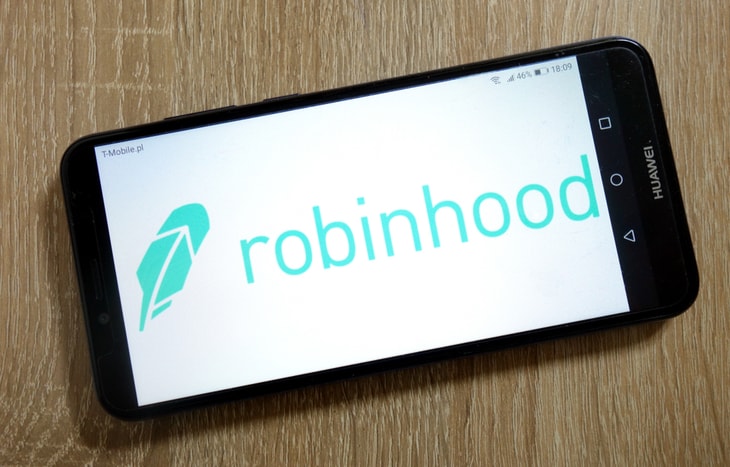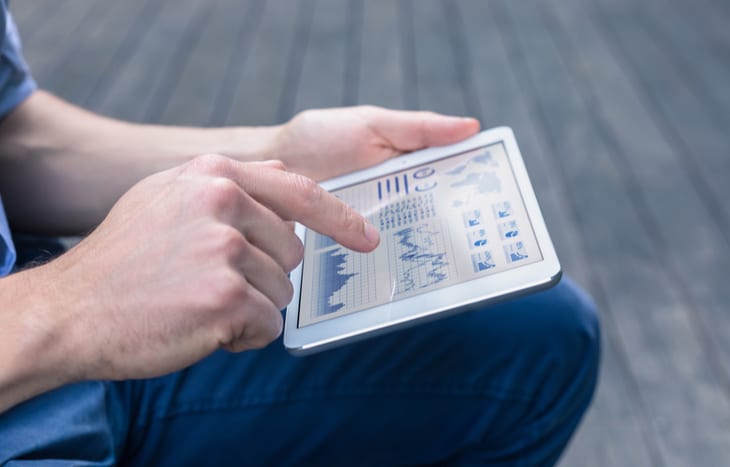Robinhood App Review: Fantastic No-Frills Option for Trading

I’ll make no bones about it: I’m a fan of Robinhood. And I don’t mean just the legendary bow-and-arrow-wielding adventurer. I mean the trading platform that has caught on majorly with traders the last few years. So you could say this Robinhood app review is coming from a place of bias, since I’m already a devotee.
I’m going to share with you all the reasons it’s a great app for trading stocks – as well as some reasons it may not the right choice for you. It certainly has some limitations, but on the whole, you may find it more than meets all of your needs as a self-managed investor.
Here’s the bottom line of my review: The Robinhood app is a fantastic, no-frills option for trading stocks, ETFs, options and even a few different cryptocurrencies. It isn’t fancy, but it definitely gets the job done, especially for beginners.

The Basics of the Robinhood App
Of course, the No. 1 selling point for the Robinhood app that any review should mention has always been the fact that it is both commission-free and fee-free. In other words, it’s a completely free app for the user. (In fact, one of the most popular Google searches about the app is, “Is Robinhood really free?”) Although for those who want more out of the app, it does have a Robinhood Gold plan that begins at $5 per month.
So this is a no-frills app, and the trading platform is quite straightforward. It’s simple to navigate your way around the platform on both desktop and mobile. I personally tend to make trades on my desktop, though I check my portfolio throughout the day using the mobile app.
However, not every type of security is available on Robinhood. There are no bonds or mutual funds, and even the securities that are represented – stocks, ETFs, options and cryptocurrencies – have a somewhat limited array of individual securities you can trade. That’s a major reason Robinhood is better suited to beginners and basic traders than highly skilled and advanced traders.
The Pros of the Robinhood App
Commission-Free and Fee-Free Trading
Although other reviews on our site will point you to some other good trading apps, Robinhood was the first app to offer completely free trading. This basically started a small trading revolution – and for good reason.
If you buy a $10 share of stock and you pay a trading fee of $5, the price must go up to $16 before you make even a 10% profit on the equity. But when the trades are free, the price has to go up to only $11 because you don’t have to cover the price of trading. The more trades you place, the more you save on commissions and fees.
Simple User Experience
Now, I don’t know how tech-savvy you might be, but it took me only a few days to figure out how to navigate and make trades in the Robinhood app.
I want my review to highlight the ease of use of this trading app. It takes only a few minutes to sign up for a new account, and once you link your trading account to your bank, you’re good to go. You can instantly transfer up to $1,000 from your bank, and you can also send that money – or your profits – back to your bank free of charge. The navigation allows you to easily see your overall account dashboard, your portfolio breakdown, your trading history and all supporting documents.
Also, if you’re wondering if Robinhood is safe, check out that link for more insight.
Account Minimum and Fractional Trading
On to the next key point in this review: there is no account minimum to begin using Robinhood, and you do not get charged a fee if you have only a few dollars in your account.
Of course, if you want to buy a full share of Alphabet (Nasdaq: GOOG), you’ll need to have the full price of the stock funded in your account. Today, that would be around $1,485. If you don’t have that much money, the Robinhood app has a solution to that too: fractional shares.
Buying a fractional share of a stock like Google allows you to spend as much or as little as you want on a position. For example, if you want to buy 10% of one share of Google, it will cost you only $1,485 x 10% = $148.50. That’s much more affordable, and you will earn the same return or loss on your investment as a full share would give you, though in a fractional proportion.
The Cons of the Robinhood App
Limited Securities Available
This is the largest issue with the Robinhood app, and where it gets dinged the most in this review.
As I mentioned above, Robinhood offers plenty of stocks, ETFs and options for you to choose from, as well as a few cryptocurrencies. Unfortunately, you can’t trade bonds or mutual funds at all right now, which can make it harder to diversify your portfolio. (Although ETFs can often accomplish this more cheaply than mutual funds.) In addition, the lack of bonds and mutual funds limits the amount of safety you can achieve for your portfolio.
Individual equities, options and crypto can all be risky bets, and ETFs also face significant market risk. The only other alternative is keeping some of your funds in cash. But even with a relatively high-interest yield on cash compared with most banks, you’ll still see an extremely low return overall.
Tax Consequences
The Robinhood app currently offers only taxable brokerage accounts. This is a limitation, as you can’t take advantage of certain tax-deferred types of investment accounts like 401(k)s and IRAs. If you don’t have other accounts where you’re saving for retirement, this is a significant disadvantage. But if you are already maxing out your 401(k) and have an IRA, this isn’t as much of a problem. Also, if you’re part of the FIRE (Financial Independence, Retire Early) movement and are aiming for an early retirement, you may not be worried about this either.
Lack of Research
Robinhood is currently severely limited in the research it offers its traders. Trading platforms like Merrill Edge are much better at providing research. If you’re looking for great trading research within the platform itself, this can be a point against the Robinhood app. On the other hand, this could be mitigated by the fact that there are so many other places on the internet where you can get research. One of the best is a little website I know called Investment U. If you’re using sites like Investment U to conduct your stock and options research, you really have no need for an in-app research center.
Final Review of the Robinhood App
On the whole, Robinhood is a fantastic platform for beginners getting their feet wet in stocks and trading. It’s also great for people like me, who are a bit more advanced but don’t need all the bells and whistles that other apps offer.
If you’re interested in learning a whole lot more about trading stocks, I highly recommend signing up for the Trade of the Day e-letter below. Trade of the Day is free, and you get to learn from two of the top trading experts in the world.
Whether or not you decide to use the Robinhood trading app, I hope you found this review helpful. Now the next step for you is to get out there and make some trades.
Read Next: Acorns Review: How to Make Your Spare Change Add Up








5 Comments
[…] can find it in just about any exchange you choose. It’s available in consumer-friendly apps like Robinhood and Webull. You can easily find it in one of our favorite exchanges, Coinbase. And most recently, […]
[…] this sense, DraftKings could become a little bit like Robinhood. Robinhood changed the investing game by offering consumers a sleek mobile platform and no trading […]
[…] this sense, DraftKings could become a little bit like Robinhood. Robinhood changed the investing game by offering consumers a sleek mobile platform and no trading […]
[…] esta democratización generó aún más acceso. El corretaje económico Robin Hood introdujo el comercio sin comisiones en 2013. Y no mucho después, los corredores de bolsa de […]
[…] pricing, visit https://www.webull.com/pricingInvestment U writer Brian Reiser recently finished his review of Robinhood’s trading platform. Here is where these two platforms stand apart.These are only […]